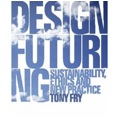This is the first installation in a series where we ask our faculty to talk a bit about their understanding of design studies as a field and as a practice that shapes their work. As a reader of this blog, you’re likely becoming familiar with Jilly Traganou’s research and interests. Her work examines space and architecture in intersection with the fields of design studies, media studies, and cultural geography, and is currently focusing on relations between design, critical territorial practices and travel, and on design’s role in the configuration of national and postnational identities. Jilly is an architect and associate professor in spatial design studies. Below she provides some further details about her take on design studies in response to our questions.
As someone whose work brings together critical concerns from a variety of disciplines (urban studies, architecture, design, media studies, cultural studies) what is your perspective on design studies as a field?
I think the challenge of our program is to redefine the role that design studies can play in the 21st century. I would like to see design studies becoming more connected with design practice, not only as a form of critique but by nurturing a generation of scholars/cultural practitioners who use various tools beyond text, and are not afraid to intervene in the real world.
What sorts of dialogue does design studies have with other modes of design and architectural scholarship, i.e. design history, architectural history?
The type of design studies that attracted my interest (and sidetracked me from the tradition of architectural history) emerged in an era when scholars became less interested in studying the production of design, and turned their attention to processes of consumption, mediation, appropriation and use. In parallel, they started paying attention to the minor and the everyday, rather than the great masterpieces by signature designers. Even though only part of design studies deals with historical location, the methods used in contemporary architectural history and design history often operate under similar premises. There is a part of architecture history that deals less and less with the cult of the master architect and the paradigmatic building to address conditions of inhabitation in the contemporary cities, spatial production by communities rather than by singular producers, and practices of resistance against real estate and regulatory plans that dominate the built environment. The relationship between the practice of architecture and that of graphic, product or service design is also becoming stronger nowadays. At the same time scholars understand that they cannot study these practices anymore in isolation, as they operate in ways that are complimentary to each other. Marketing and media, for instance, in which communication design plays a primary role, have become indispensable for the function of architecture these days. On the other end of the spectrum, we see the emergence of a new type of designer/architect who sees their profession in service to the society rather than to a client or a patron of design. Therefore, I see a lot of exchanges between these fields happening already. Design studies, of course, is in dialogue with several other fields, such as design methods, design ethnography, design philosophy, design education, science and technology studies, and theories of practice.
What are you working on now?
I am working on a book on design for the Olympics, contracted by Routledge. I started looking at design for the Olympics as a means of representing/forming national identity. I soon realized that neither “representation” nor “national identity” are adequate notions to express the conditions of our contemporary societies. This led me to questions of participation and post-national identity, which became my key points of critique and advocacy in this book.
When you think about the history and future of design, what provides inspiration? Is there any specific work (texts, practices, objects, etc.) you admire or would recommend for those working in design studies today?
Any book, film, movement or event can inspire thinking about design. What has been provocative for me in recent times in thinking further about design and material practices in our current times are the Occupy Wall Street movement, the financial crisis in Greece, and the conditions of post-tsunami Japan. These subjects define my future research agenda, and will become part of my teaching in some ways. Here I see a broader spectrum of connections that bridge material practices with politics and territoriality: starting from the home and the city and moving to the larger scales of national space and the global condition. I am particularly interested in studying the transnational networks that are created by the circulation of people, products and capital, traversing boundaries, and creating new geographies and identities. What happens “here” has always a multi-sited dimension.
Jilly recommends books by the thinkers listed below. These selections reflect her advocacy for an overall stance of participation and designing with user-generated content.
- Victor Margolin
- Ezio Manzini
- Tom Kelley
- Donald Norman
- John Chris Jones
- Nigel Cross
- Tony Fry
- Guy Julier
- Alastair Fuad-Luke
She also suggests these publications and websites:
- Design Issues (http://www.mitpressjournals.org/loi/desi)
- Design and Culture (http://www.bergpublishers.com/?TabId=3594)
- Journal of Design History http://jdh.oxfordjournals.org/)
- Design Philosophy Papers (http://www.desphilosophy.com/dpp/home.html)
- Design Observer website (http://designobserver.com/)











